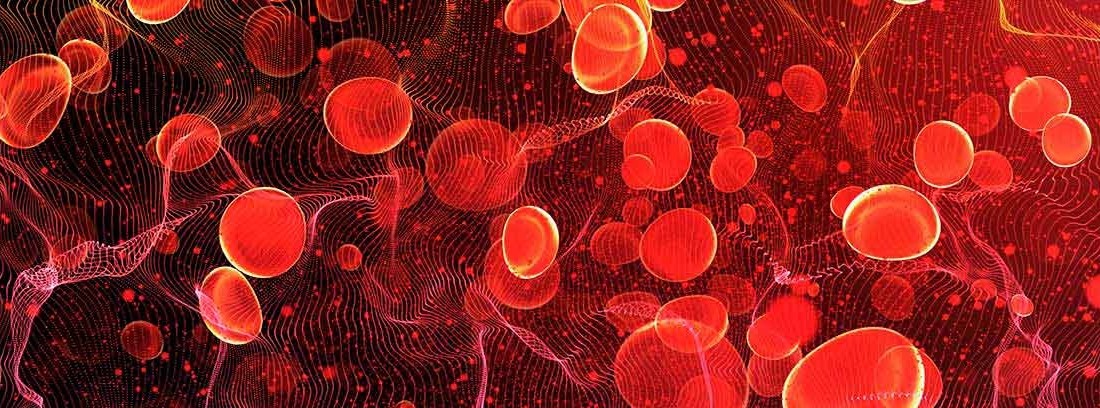What are monoclonal gammopathies or diseases?

Among the different types of blood cells are plasma cells. These cells are part of and are responsible for producing immunoglobulins. Immunoglobulins act as antibodies of the organism. Each Ig is made up of two Ig heavy chains: IG A, Ig G, IgE, IgM and Ig D, and two light chains (kappa or delta).
When there is a monoclonal gammopathy there is a excess production of plasma cells which in turn abnormally produce a type of heavy or light chain. This means that only one type of antibodies (or immunoglobulins) is produced and, in addition, the formation of antibodies is prevented by the other normal plasma cells, which are destroyed.
Among the monoclonal gammopathies there are two groups main:
- The premalignant, which is monoclonal gammopathy of uncertain significance (MGUS).
- The malignant: multiple myeloma, Waldeström macroglobulinemia, primary amyloidosis and multiple myeloma.
Types of monoclonal gammopathy
Monoclonal gammopathy of uncertain significance
Is the way more benign of the illness. It may not cause any major or evolve into more serious forms like the Multiple myeloma or Waldeström's macroglobulinemia. It tends to appear more frequently from the 60-70 years. The patient is asymptomatic and is detected incidentally after a blood test where an elevation of one Ig is observed (which is called a monoclonal component).
It generally only requires observation and analytical controlsIf an increase in protein is detected, other tests such as a bone marrow aspirate must be done to rule out that it has not evolved to myeloma. The disease can remain stable for years without causing any disorder.
Multiple myeloma
There are also produced, by altered plasma cells, a type of antibodies (or immunoglobulins) called paraproteins and a decrease in normal antibodies, so there is a increased risk of infections.
In multiple myeloma the plasma cells are damaged and this causes these cells to become cancerous. They proliferate giving rise to tumors generally located in the bones. Thus, unlike monoclonal gammopathy of uncertain significance, myeloma has symptoms.
It mainly affects the bone skeleton and to multiple places (where there is bone marrow) such as the skull, spine, pelvis, or ribs. The hands and feet are usually not affected. Bone involvement results in pain and increased risk of fractures. Bone pain is very characteristic of myeloma, but other symptoms that appear are anemia or impaired kidney function.
Diagnosis is made by blood and urine analysis and study of the bone marrow (aspirate) to confirm the existence of abnormal plasma cells. Radiological techniques are also indicated to determine skeletal involvement:, MRI, PET CT.
The current treatment of myeloma is based on the use of drugs called immunomodular together with classical chemotherapy. Bone marrow transplantation may also be indicated. All this will depend on the individual characteristics of each patient.
Waldeström's macroglobulinema
It is also known as lymphoplasmacytic lymphoma. It is a type of cancer of blood cells (B lymphocytes) that produce large amounts of monoclonal Ig M. It is a type of cancer slow and infrequent progression.
In a percentage of patients, the disease can be asymptomatic. In other cases, the growth of lymphoplasmic cells causes elevated levels of IgM in the blood that can cause what is called hyperviscosity syndrome.
The blood thickens, disrupting its normal flow. It results in the following symptoms: tiredness, weight loss, enlargement of the lymph nodes (adenopathy), enlargement of the spleen, infections, abnormal bleeding (especially from the nose), involvement of the peripheral nerves (numbness, tingling, dizziness, splenomegaly and alterations coagulation, among others).
The diagnosis It is established by performing a bone marrow biopsy where the occupation of the marrow by these abnormal cells is observed, in addition to the presence of IgM in them.
Treatment is indicated when the patient has symptoms and it is usually based on different drugs such as alkylating agents and monoclonal antibodies.
Generally the results of the treatment are excellent. Bone marrow transplantation is intended to be curative but is only indicated rarely due to the risks involved.
Primary amyloidosis
There is a production of large amounts of a protein, called amyloid substance, by plasma cells. This substance is deposited in the tissues altering the function of the affected organs (such as the kidney, the heart or the nerves). Is very rare.
The deposition of the amyloid substance is slow, so the disease has a chronic course and a very slow evolution.
The symptoms are quite nonspecific such as fatigue, diarrhea, weight loss, liver enlargement, sensory disorders due to nerve involvement, among others.
The diagnosis is made after the demonstration of amyloid material in the organs, for them it is required to perform a subcutaneous fat biopsy. If it is negative and the index of suspicion for the disease is high, it can be done in other organs (for example, renal or rectal biopsy).
Treatment includes a hematopoietic transplant and specific drugs such as corticosteroids associated with other agents such as cyclophosmide and thalidomide.
- When there is a monoclonal gammopathy Only one type of antibody (or immunoglobulin) is produced, and the formation of antibodies is prevented by the other normal plasma cells, which are destroyed.
- Among the monoclonal gammopathies there are two groups main, malignant and the premalignant which is monoclonal gammopathy of uncertain significance (MGUS).
- Regarding the malignant are: multiple myeloma, Waldeström macroglobulinemia, primary amyloidosis and multiple myeloma.
Intensive Medicine Specialist
(Updated at Apr 14 / 2024)